Campaign: Case Blue is the newest campaign book for Bolt Action from Warlord Games. Taking a swift jump in time back from the allied invasion of Italy, it is set during the infamous Fall Blau. This makes this campaign a sort of prequel to Campaign: Stalingrad. I say sort of, because this book covers some of the same battles as Stalingrad, such as Operation Uranus. While the Stalingrad book only concerned itself with the immediate lead up to and duration of the roughly 6 month of fighting in Stalingrad, Case Blue oversees the greater campaign following Operation Barbarossa.
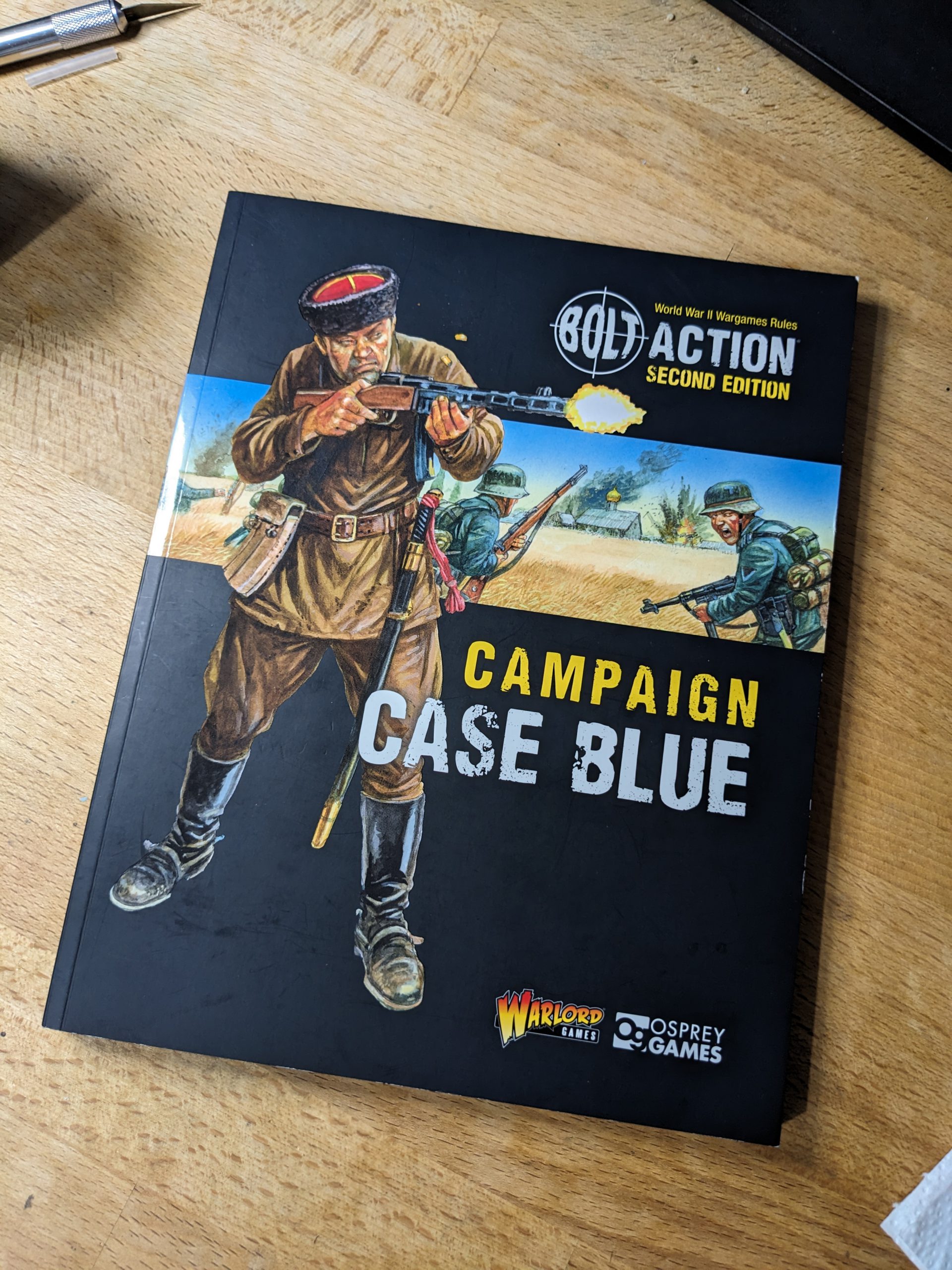
Unlike the previous Tough Gut campaign book, the scenarios are placed right after or in-between the bits of historical text leading up to it. It still manages to outdo that book by giving us roughly five main sections to work through; an overview of the many events preceding and during Case Blue, with respective new scenarios seeded in where they fit, new units (including the rare multi-nation units), new army special rules, new theatre selectors, and some new scenario rules. All in all, it’s a multiple-train-rides-to-work type of read.
Historical Review
The authors, among them our very own Alex Smith, have done a fantastic job painting the rather messy happenings during Fall Blau. Each of the chapters comes with a rather detailed introduction to what has happened and what is happening during this. Each of the new scenarios is also introduced with some flavorful text and capped off at the end with the description of the real life outcome of the battle. The ‘Top Secret’ cards also return, bringing us interesting and hilarious little tidbits of history to enjoy.
New Units & Nations
All in all, the new units mainly bolster the rather abysmal roster of the minor axis forces, while also introducing us to the newest nation; the Slovaks!
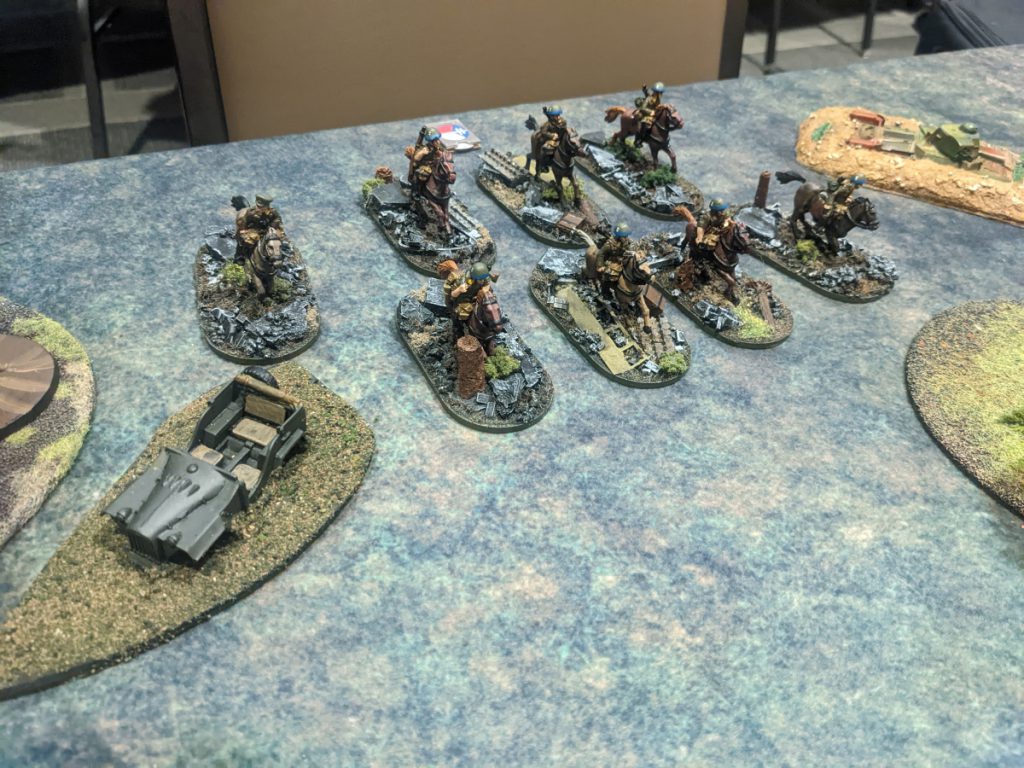
But before we talk about them, let’s get us up to speed roughly what the major nations get in this book.
Germany
German players – already overburdened – are getting some new choices in familiar units. First is a Siege Gun Forward Observer: unlike normal forward observers, he gets his own chart for resolving siege gun barrages. And while it has the classic 66% chance of not going how you planned it, this is still such a powerful tool to not only flatten enemy fortifications, but also to send a D6+6″ radius of infantry into shellshock, easily tipping the scales when facing inexperienced units.
Next is the infamous Waffen-SS Wiking Panzergrenadiers squad. In almost any way they work like a regular SS squad; 2 LMGs, optional fanatics, etc. What sets them apart is the option to replace the German national rule ‘Initiative Training’ with the Finnish ‘Sisu’ for 2 pts per model. To recap why that is pretty good: Sisu upgrades all models in a unit to the next rank when they take 50% losses, veterans gaining an extra +1 to their morale.
The last two units can be quickly summed up as “pre-existing unit, but with a minor variation”, not that there’s something wrong with them, just not a lot to talk about. Ostlegionen squads are kinda just Osttruppen, but replace their Panzerfausts with anti tank grenades, and they start out as green, with the potential to become shirkers or regulars upon first casualty.
Gebirgspioniere are as their name implies, just a mountaineering version of Pioneers, they are essentially a stripped down version of Assault Pioneers with the mountaineers keyword, making them well suited for this campaign’s scenarios.
Soviet Union
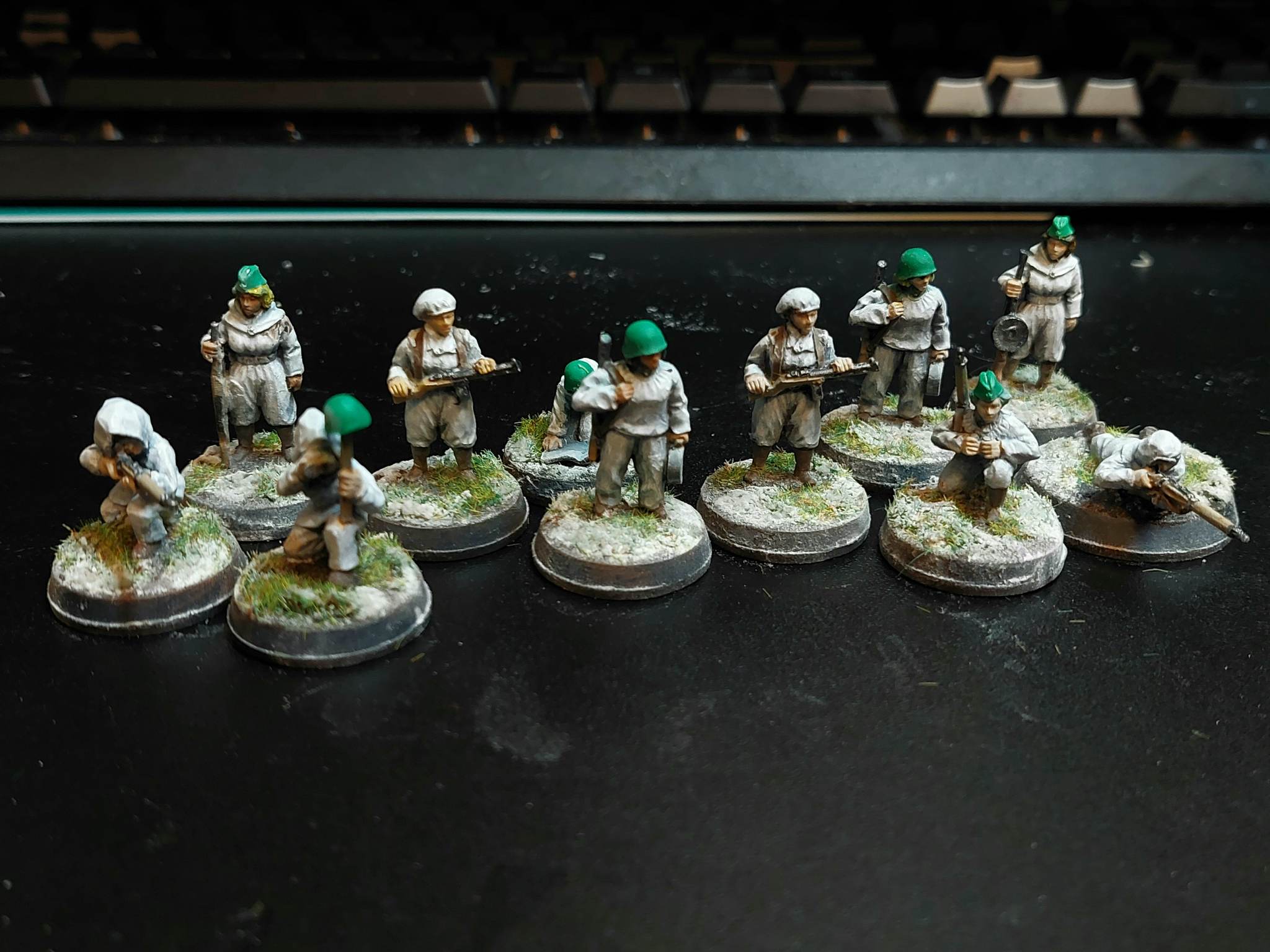
Similar to the Germans, the Soviet Union also gets access to a new type of forward observer; the Naval Forward Observer. Unlike the German siege guns, the new chart for the Soviets isn’t nearly as devastating and able to flatten large areas of buildings, but they are much more reliable in instilling terror, as every roll from 1-4 will shellshock a unit with D3 Pins.
They also gain the the Anti-Tank Rifle Squad: as the name implies, this is a unit able to take up to three anti-tank rifles in a squad at once, bolstering their tank killing potential through massed 14.5mm bullets. Next up is another anti-tank team. Unlike the previous squad, this one comes as a single team. The caveat here is, that they get forward position like snipers.
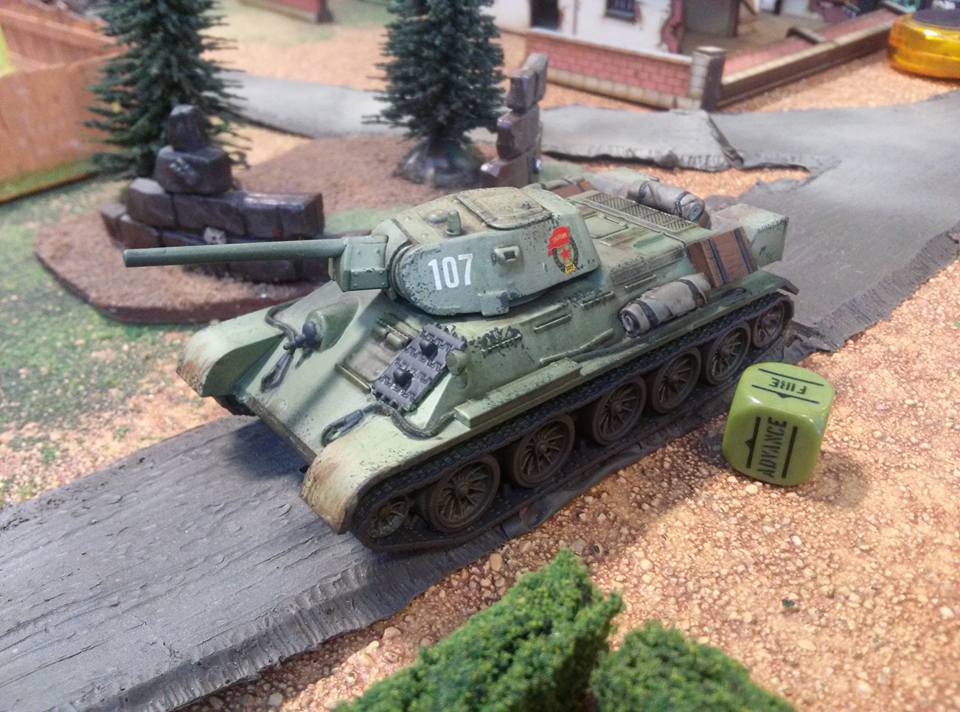
Last of the infantry units, is a mountaineering squad: The Mountain Division Squad is very much a stripped down infantry squad, only getting access to an LMG and anti-tank grenades. Their special rule home ground however makes them an excellent selection for outflanking and ambushing enemies from reserves.
The last two units are less of an actual consideration for most battles, as they are a flavorful addition for the scenarios in this book. First is the Landing Barge with capacity for 60 men, or 1 light tank and 30 men, and a damage value of 6+. Last is the MO-4 Patrol Boat, a submarine hunter turned escort vessel featuring 2 light howitzers front and back, and 2 HMGs left and right.
Italy
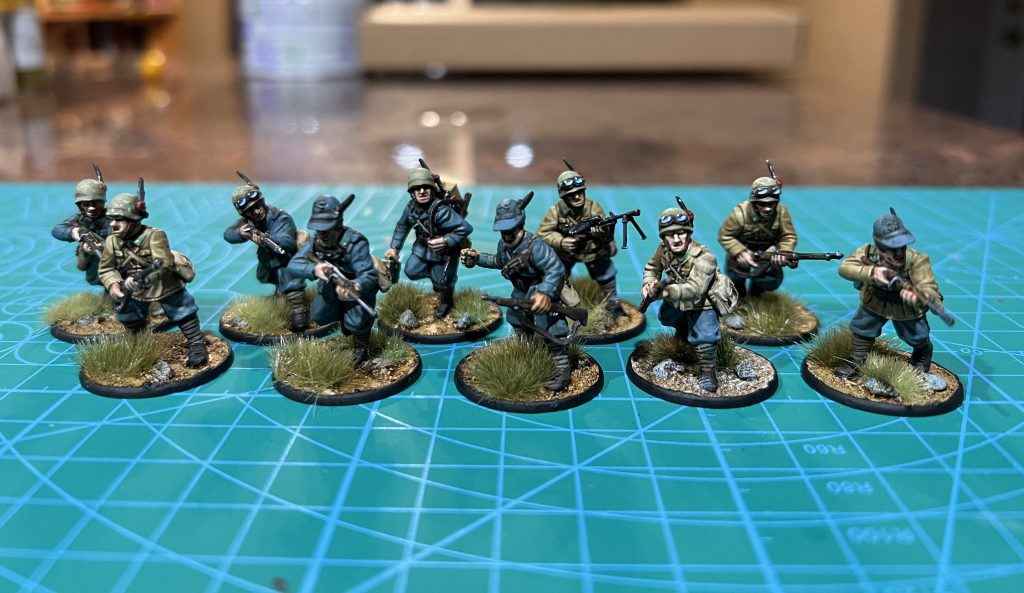
Most of the minor Axis powers received quite a few new units in this book. Due to this, I will keep their summaries short, highlighting the more curious or interesting units over the more generic re-skins.
First of the more interesting units is the Fucilieri squad. They serve as a way to build massive units as they were part of Italy’s late war reformation of the rifle platoon. Instead of 10-12 men, they can be taken in squads of 20, gaining access to a second LMG in the process. Aside from being able to keep morale better in check, they are rather unremarkable in terms of equipment.
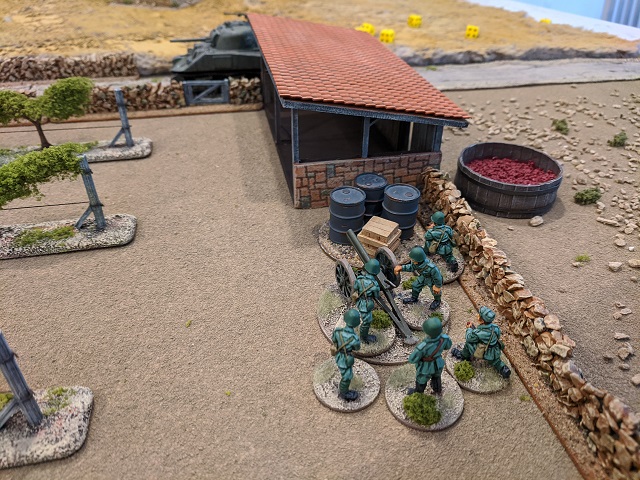
The Savoia Cavalleria Squad were Italy’s answer to German inquiries into what in Italy’s military wasn’t from World War 1. Despite being a rather outdated infantry formation by the end of the Blitzkrieg, the steppe of the east gave cavalry a second chance to shine. The Cavalleria make themselves an appealing unit through their special rule Carica! allowing them to make one further assault after a successful close-quarters combat.
Last of the more interesting Italian units are the Croatian Legions. Similar to the Fucilieri their max unit size is a whopping 18 men. In addition, their special rules Croatian Pride allows them to remove two pin markers instead of one from ‘You men, snap to action!’.
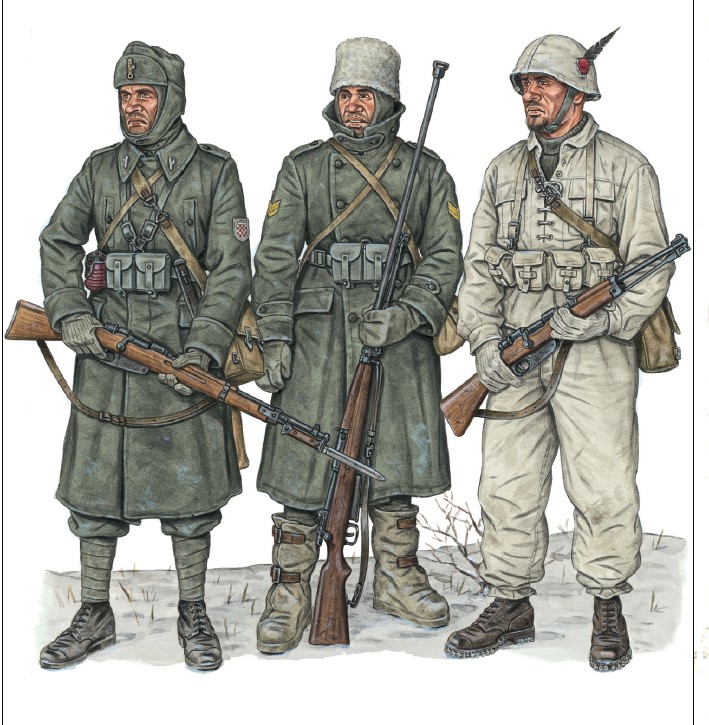
Hungary
Hungary’s new units are partially an expansion to their roster from the Axis rulebook, such as Flamethrower teams or a motorized unit. The more curious are Second Army Rifle Section, as they can choose whether to go with a LMG team or a light mortar for their squads heavy weapon support. Choosing the mortar allows the squad to split fire between rifles and the mortar, allowing you to harass two units at once!
The Huszar Reconnaissance Section on the other hand are a cavalry unit seemingly not made for classic charges. Behaving like a normal cavalry unit in any way except for not being allowed to move into contact with an enemy while mounted. As a pay off to portray their usual task of reserve reinforcements, they ignore the -1 to their Order test when they arrive from reserves.
Romania
The Romanians spot two fun new units for their outing in Case Blue. First are the Tank Hunters. Given the minor Axis nation’s lack of anti tank equipment, these are just two schmucks with some AT grenades. What sets them apart is their status as veterans among a more inexperienced army and their additional rules. Smokescreen allows them to make a surprise charge from 9″ away and also each get an additional attack against vehicles. Given that they cost only 43 points, they are an easy pick for Romanian platoons.
The next unit, the Mortar Section is similar to the Hungarian’s Second Army rifle section. They are in essence a smaller rifle squad with an added light mortar that counts as an infantry selection. Just like the Hungarian unit, they are allowed to split the fire between the mortar and the remaining rifles. The remaining units are just things missing from the original selection such as flamethrowers, cavalry, motorbikes and an air force forward observer.
Slovakia

The big shiny new thing coming with this book is the Slovak army list [Editor’s note: Historicals co-editor Michael O wrote much of it!]. This serves similarly to the Axis allies books, giving you a rudimentary selection of units, setting the boundaries for what this army has and doesn’t have compared to the other nations. The basics are all here, officers, medics, forward observers, etc. The more flavorful additions are Engineers, Dragoons, Paratroopers, and a Partisan Section. The partisans and paratroopers specifically seeing action as anti-fascist forces during the Slovak National Uprising in 1944. It effectively makes this both an Axis and an Allies list to an extent.
Their selection of Artillery and weapon teams seems to be trimmed down to the light and medium variants, lacking the heavier equipment. As for vehicles, they are served with a handful of transports and tows, the OA VZ.30 armoured car and the LT VZ.35/38 or as the Germans knew it, the Panzer 35(t).

Units for Multiple nations
There are two new units who can be used for multiple nations featured in this book. Those of you waiting for Cossacks in Bolt Action will be happy to hear that they finally got their own profile, usable by the Soviet Union, Germany, and Italy. They come as regulars only, going up to a maximum of ten men, being able to take a SMG, LMG and horses as mounts for each man. Their special rules are jam-packed with unique flavor such as ‘Born in the Saddle‘: Unlike most cavalry, the Cossacks are armed with rifles, and can fire them as such even while mounted, instead of as Carbines. ‘Cossack Spirit‘ refers to their streak of independence, preventing squads from receiving a morale bonus via ‘You Men, Snap to Action’.
The other multi-nation unit is more of a flavorful addition than anything else. The Stragglers unit can be taken by Germany, Italy, Hungary, and Romania and describes those men trying to reach friendly lines after the crushing defeats endured during Case Blue and operation Little Saturn. They can be either inexperienced or regular, coming in at about one point cheaper than your usual regular soldier and going up to 10 men. Their big thematic downside is their special rule ‘Malnourished and Frostbitten‘: whenever they are given a run order successfully, they gain a pin marker, representing their flagging strength. What’s peculiar is the fact that you buy up to five additional men as unarmed soldiers, buying rifles for an extra 3 points each. Unarmed men can only count as casualties and not fight either at range or in close combat.
New Army Special Rules
This book offers you an array of new special rules to use for your army, which you can choose to use instead of the ones offered in their respective army books for this campaign or, if agreed upon with your opponent, in normal games.
Italy
Improvised AT
To represent the struggle for anti-tank capability and improvisation in the Italian army, any AT Grenades and weapons with a penetration of less than +3 may re-roll the result if the player chooses so.
Large Squads
To represent the overwhelming firepower of the Fucilieri squads, any unit with 14 or more men still alive causes D2 pins instead of 1 when firing. They lose the ability once they fall below 14 man strength.
Credere, Obbedire, Combattere
‘Believe, Obey, Fight’ lets you choose one of three ‘values’ to apply to the relevant units for this battle.
- Credere
The Blackshirt ‘M’ Battalion Squads from this book and all HQ units gain the Fanatics special rule.
- Obbedire
Alpini squads gain the Stubborn special rule. Additionally, any veteran HQ units meant/modelled as Alpini gain the mountaineer and Stubborn special rule.
- Combattere
Bersaglieri and veteran HQ units modelled as such gain the Fire & Maneuver special rule and models armed with rifles do not suffer the -1 shooting penalty when advancing.
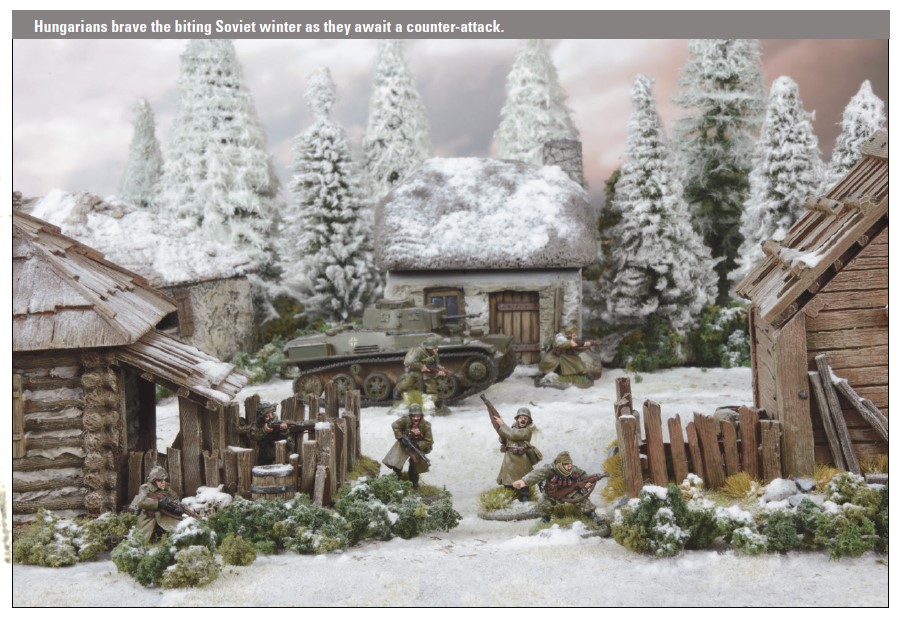
Hungary
Improvised AT
See above.
Trial by Fire
Whenever a ‘You Men Snap to Order’ is given, you roll a D6, on a 6 one inexperienced unit within command range is improved to regulars.
Huszars Tradition
All Hungarian tanks gain the Recce special rule and any units that already have that rule may make their Recce movement in any chosen direction, including close to the enemy.
Romania
Improvised AT
See above.
Lead from the front
Officers within 12″ of enemies may upgrade their morale bonus by 1.
Flank Attack
Cavalry, Mountain, and Motorized Sections can outflank one turn sooner than usual.
Hardy Soldiers
At the end of each turn, the Romanian player may remove one pin marker from one of their units.
Slovakia
Take Cover!
Any infantry or artillery unit that has acted in a turn already, may choose to change their order to Down when fired upon. Any unit who goes Down in this way, will remain so for the next turn, their dice are not returned to the bag and they do not remove D3 pin markers as usual.
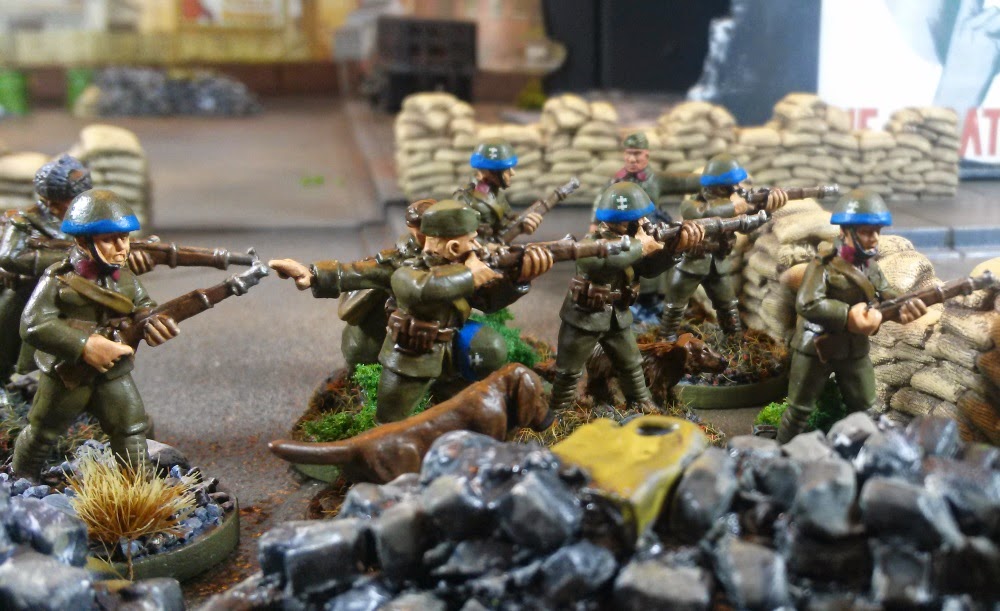
Reliable Weaponry
Slovak LMGs are 5 points cheaper than usual. This price change is already included in their unit profiles.
Jury-Rigged Machinery
Slovak vehicles ignore one pin when modifying their morale. However they must still test when they only have one pin.
Limited Officers
Once per game when an officer is killed, the nearest NCO is upgraded to a Second Lieutenant, he gains all bonuses such as the +1 to morale and ‘You Men Snap to Action’, but remains with his original unit. Slovak forces cannot purchase more than one officer.
New Theatre Selectors
The new Theatre Selectors in this book, as with most are added to give flavorful army compositions to each of the scenarios. While some reuse existing selectors from the respective army books, almost all scenarios feature at least one of the new ones. As this was still the early to mid war period, all of the selectors disallow the use of Panzerfausts.
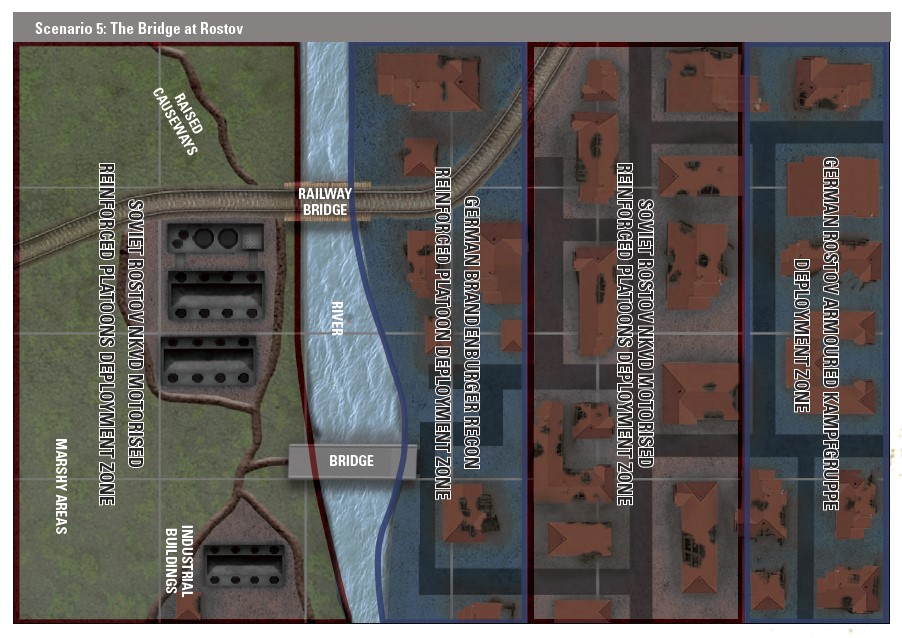
Special Scenario Rules
The Scenario Rules in this aren’t all new, some of which are reprints from other expansions or the rulebook. Examples of this are rules for digging in, which can be found in previous campaign books, or the Rubble and housefighting rules. What is new, are the armored trains employed in the ‘Derailed’ scenario. But in short, this section is there to freshen you up on some of the relevant rules featured in the scenarios.
The Final Verdict
Campaign Case Blue is one of the best books if you’re playing some of the minor axis nations: not only have they gotten almost as many new units as they received in their original book, they also feature heavily in the scenarios. Additionally it comes with a full list for the Slovaks, one of the really minor nations. [Editor’s note: Momma Negan has completely obliterated my self worth]
Historically speaking, the book seems very well researched, although I don’t really have access to all the sources to verify this 100%. My personal favorites are the new army special rules – giving rather flavorful additions and especially Credere, Obbedire, Combattere allowing you to tool your army to specific branches of the Italian military.
Even if you don’t necessarily want to play games set during Fall Blau and such, so long as both you and your opponent agree, you can make good use of the new rules in most games. But if Fall Blau or the lead up to Stalingrad are remotely interesting to you to play, you should absolutely pick up this book.
Have any questions or feedback? Drop us a note in the comments below or email us at contact@goonhammer.com.


